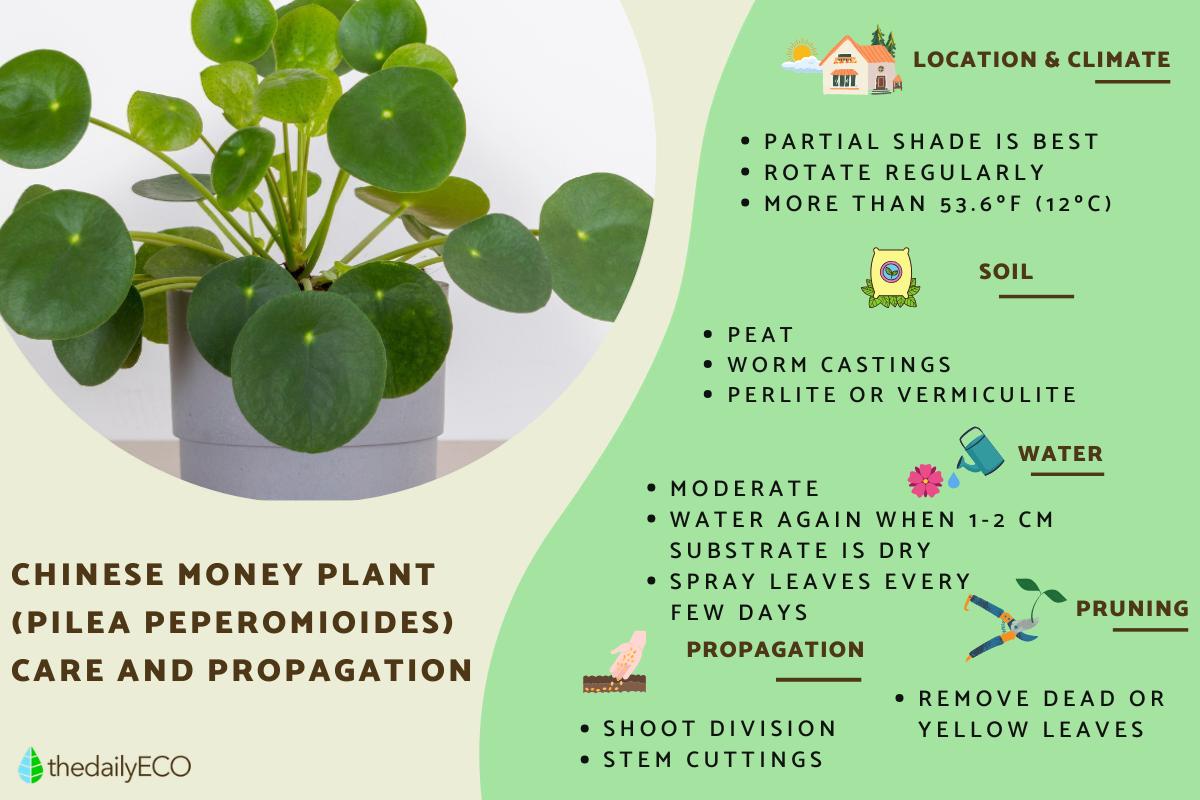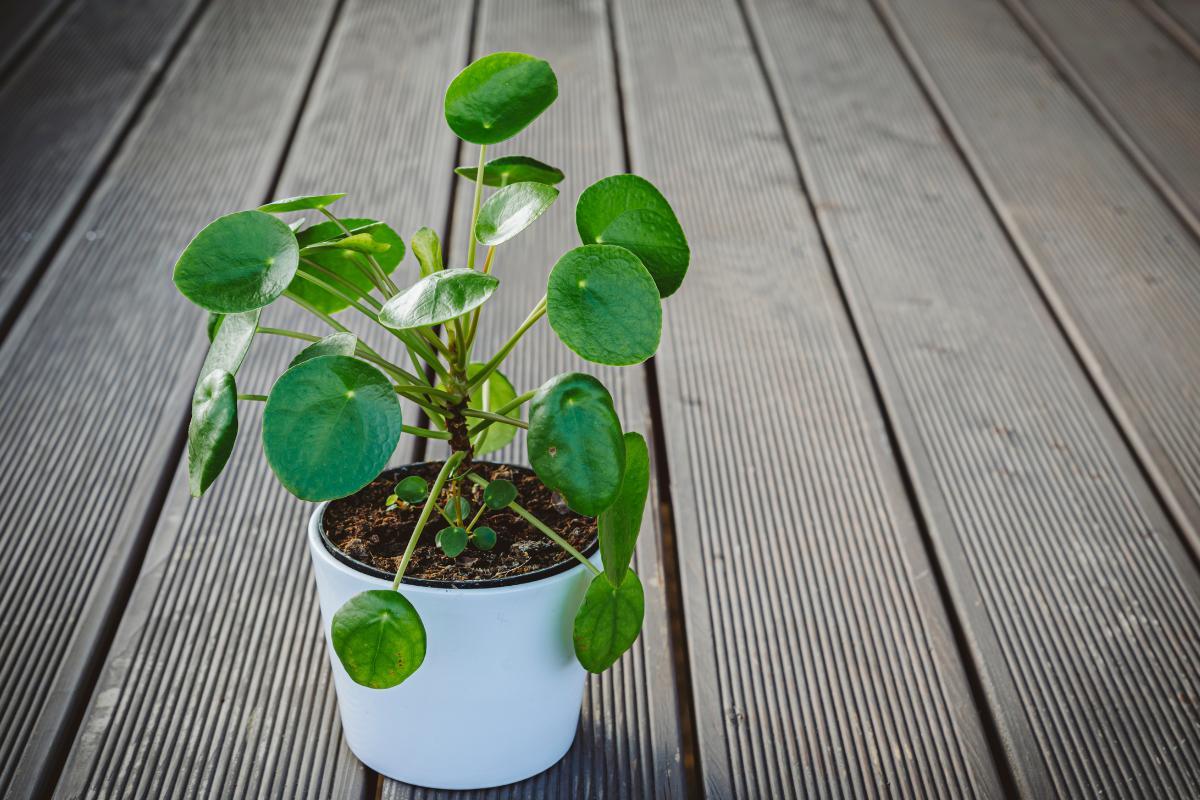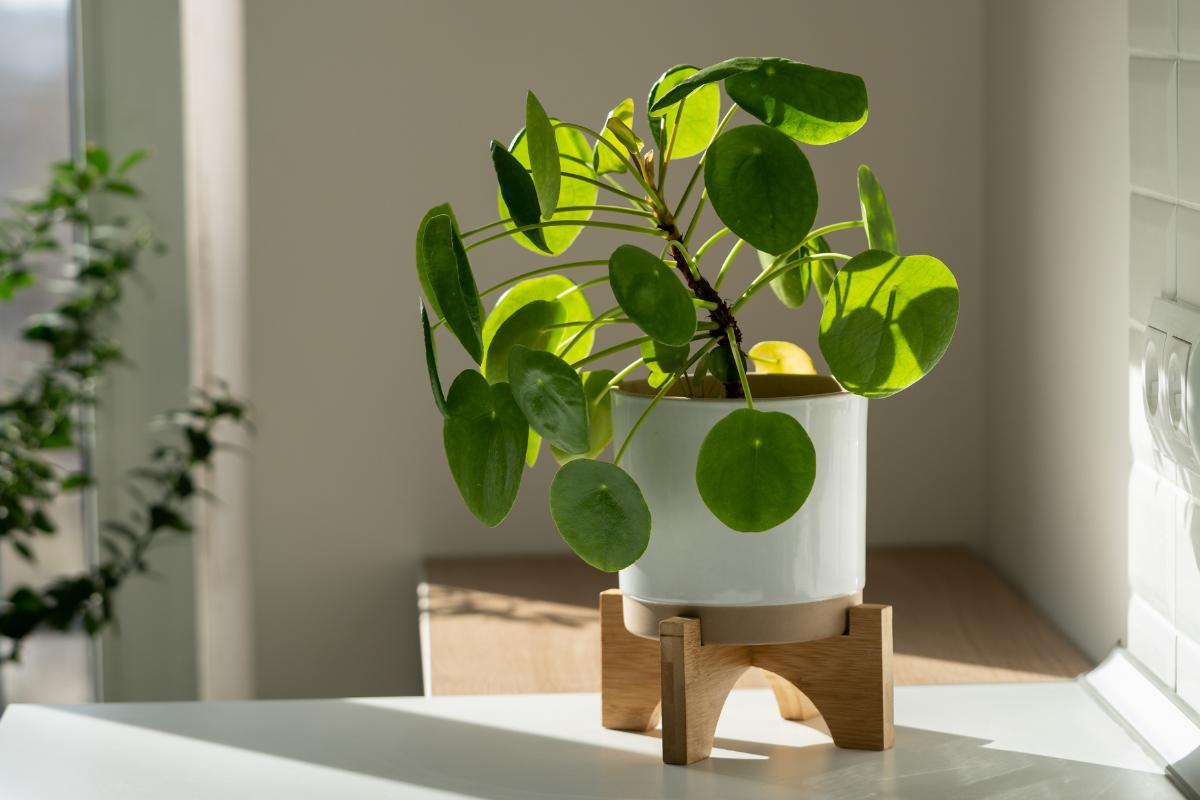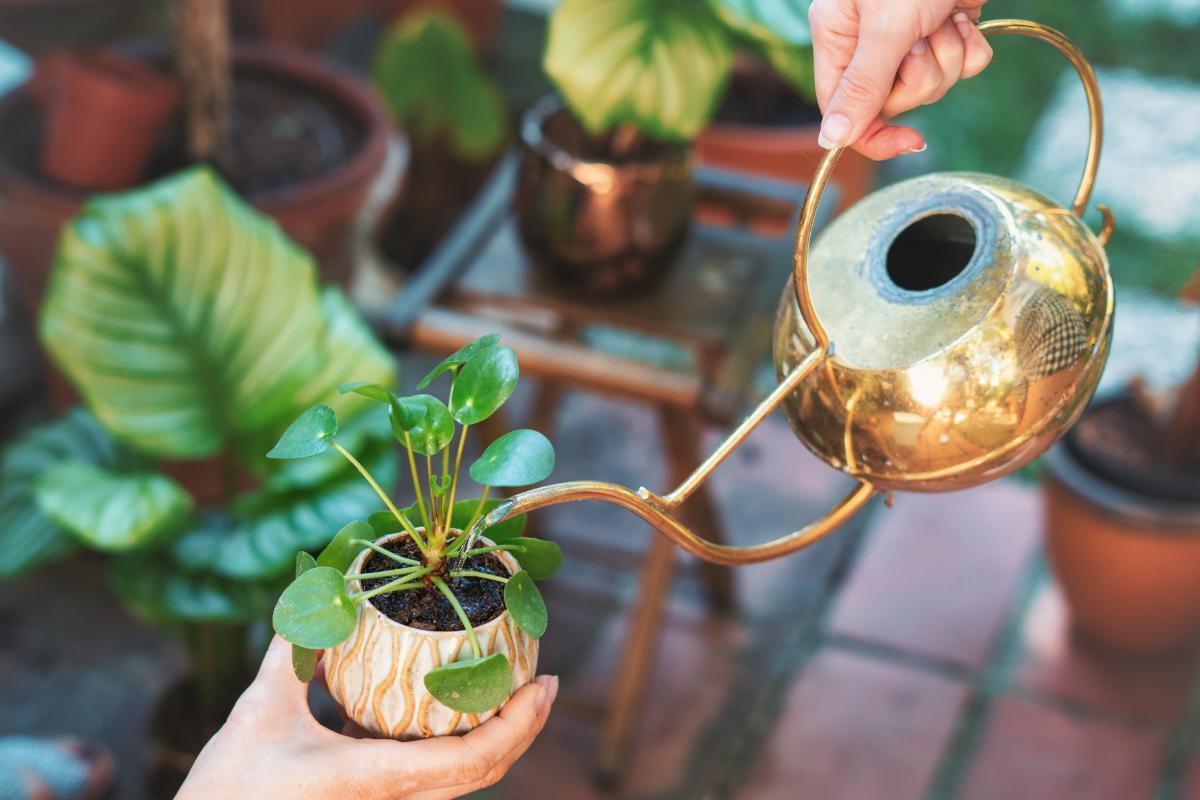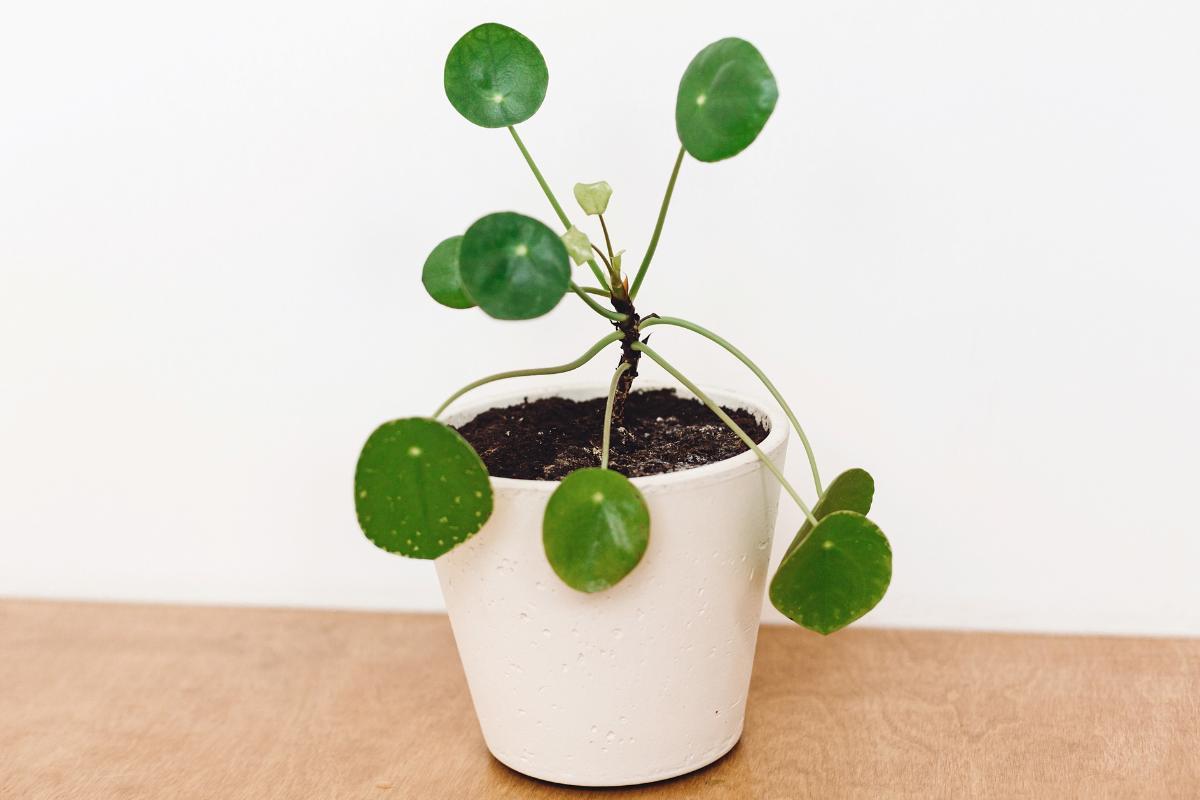Chinese Money Plant Care and Propagation

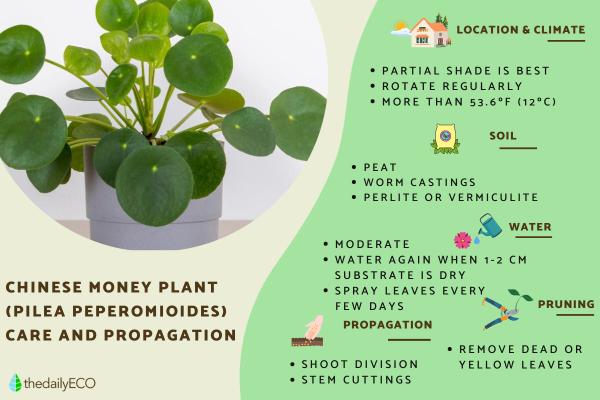
Also known as the UFO plant, missionary plant or pancake plant, the Chinese money plant (Pilea peperomioides) is a flowering plant in the nettle family. Despite this, they are not a type of stinging plant and are completely safe to keep in the home. They are easy to care for, requiring infrequent watering, semi-shade and a moderate temperature. Their common name is because they are associated with good luck in Chinese culture, but they are just as valuable for their beautiful aesthetic. Propagation is through division or cuttings. Despite their ease of care, they are prone to certain diseases if we are not careful.
thedailyECO provides our guide to Chinese money plant care and propagation. We explain how to ensure it thrives, as well as how to propagate the plant properly if you want to grow more.
Chinese money plant characteristics
To know how to best care for money plants, we should look at some of their characteristics. This will help us to know if it is a plant suitable for our home, as well as inform the care we provide:
- This plant has become fashionable recently due to it very peculiar appearance. It has a thick central stem, from which rigid stems of very round, fleshy and small leaves emanate. These leaves measure about 2-4" (5-10 cm) in diameter.
- It is a relatively small plant with small roots. It does not exceed 12" (30 cm) in height.
- When young, Chinese money plants tend to be more compact. As the stem grows, the leaves become more spaced out.
- In summer and spring, it can produce small white flowers tinted with pink, but they are not always present.
- Variegated specimens with white spots can be found. They are harder to find and more expensive due to the added value.
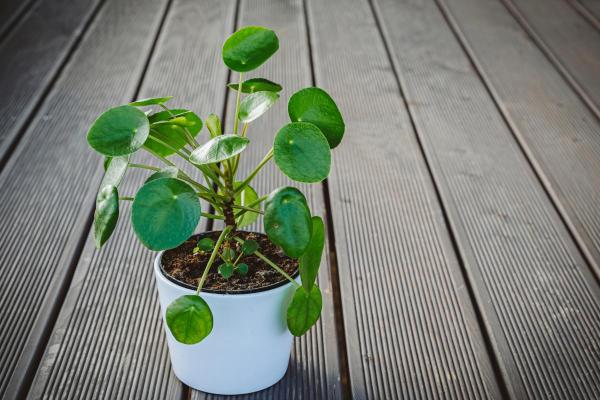
Light, temperature and location for Chinese money plants
The Chinese money plant needs to be place in an ambient environment which best mimics is natural habitat:
- This plant is native to rocky and humid areas of China, so a similarly humid environment must be provided for it to thrive.
- They are indoor plants and require semi-shade as a result. Direct sunlight will burn their leaves, but you have to make sure they are always receiving the right amount of light. Too little light causes them to have fewer leaves and the few they do will be very spaced out.
- Since it is a plant with leaves on all sides of the stem, it must be turned regularly so that it receives even light all over.
- It should not be kept in places where the temperature reaches less than 53.6ºF (12ºC), because the plant will resent it and its growth will slow down. They require warm temperatures.
- Its root system is small, so you can have it in small pots and it will thrive. It is ideal for small spaces, such as desks or kitchens.
- It should be kept away from drafts and from sources which dry up environmental moisture such as stoves or heaters. It should be protected from extreme weather and frost.
Discover other partial-shade plants you can keep at home with our related guide.

Soil and fertilizer for the Chinese money plant
It does not tolerate constant waterlogging, so you should prepare a mixture that promotes good drainage of the substrate. To do this, prepare a mixture of equal parts peat, worm castings and add a handful of perlite.
Fertilizing is not essential, but if you feel the Chinese money plant could use some help, the time to do so is in spring and summer. You can add a top layer of worm castings as mulch or you can use universal liquid fertilizer. The latter is added once a week during the aforementioned growing months.
Discover whether perlite or vermiculite is better for your substrate needs.
Watering Chinese money plants
Consider the following when providing irrigation for Chinese money plants:
- Watering should be moderate, but not abundant. Water completely so that the entire substrate is moistened, which is confirmed when you see water coming out of the hole at the bottom.
- Wait until the first few centimeters are dry until you water it again. In terms of frequency, this means that you will water approximately once a week, although it depends on the conditions where you place it. It is important you check the substrate so you can avoid excessive watering.
- Chinese water plants will demand more water during spring and summer, as this is their growing season. This demand will decrease in autumn and winter when you can water once every two weeks. If you notice the leaves are beginning to curl up too much, increase the frequency of watering.
- Since its roots are small, you should not leave it in excess water released by the pot. This will be important to avoid root rot.
- This plant has a high humidity requirement, so you will need to mist the leaves with water regularly. Alternatively, you can place the pot on a plate with pebbles and fill the plate with water. This will help to keep the humidity in the environment.
If you want to provide some extra nutrients, you can check our our article on the benefits of rice water for plants.
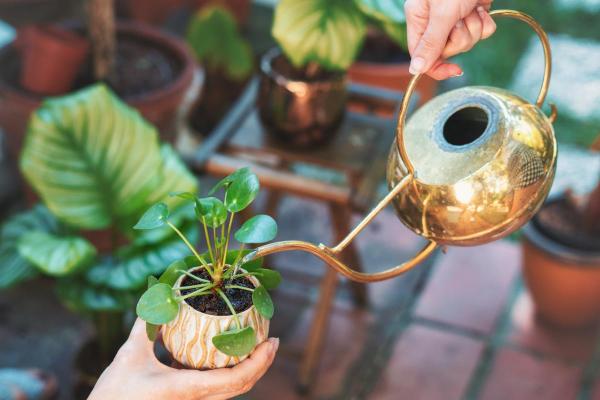
Pruning Chinese water plants
Generally speaking, the Chinese money plant doesn't need pruning unless it there are health reasons which necessitate it. Otherwise, most people prune their Chinese money plant for aesthetic reasons. You may see some leaves sticking out of place, so pruning can provide better symmetry. Use previously washed and disinfected tools so that the plant does not contract fungal or bacterial infections.
Another maintenance issue is dirt accumulating on the money plant's leaves. For this reason, you can wipe the leaves clean with a damp cloth to remove any dust which collects on its shiny leaves. This will help the plant catch more light and improve growth.
Our related article shares some of the different types of pruning to help you know where to start.
Chinese money plant propagation
The ideal time to propagate the Chinese money plant is in late spring. There are two main ways to propagate the plant are by dividing shoots or by cuttings.
- Offshoots: offshoots from this plant are known as pups or offsets. You will see this plant begin to produce shoots at the level of the substrate. When the shoots reach a considerable size, are manageable and have more than 3 leaves, you can remove them and transfer them to a new pot to propagate your plant. Make sure to water abundantly the first few weeks to facilitate the transition.
- Cuttings: you may hear that you can propagate a Chinese money plant with leaf cuttings, but this is not entirely accurate. For a new plant to grow, you will need to have a piece of the stem, otherwise it will not have the right material. Cut a piece of the stem with a few leaves and place in water or moist soil. Change water every few days and wait for roots to grow. Once a strong root appears, plant in a suitable substrate.
Learn how to propagate a xanadu plant with our related article.
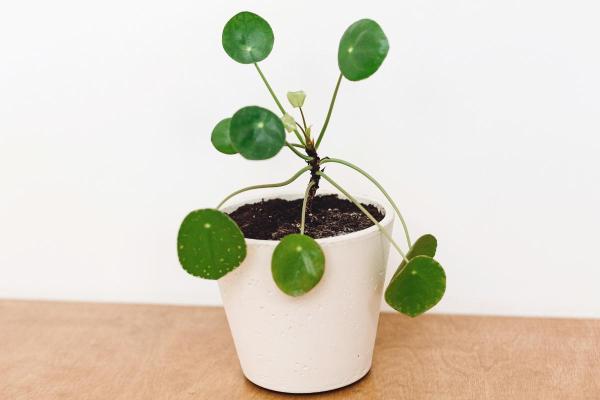
Chinese money plant health
Although it is an easy-to-care-for plant, there are certain factors that can interfere with the health of a Chinese money plant. Here are the main symptoms that indicate something is wrong:
- Yellow leaves: this happens when it is receiving too much light.
- Yellow soft leaves and stems: due to overwatering.
- Fallen leaves: the weather is very cold. This is normal in autumn and winter, but you should only be concerned if it happens outside of this season.
- Cup-shaped mature leaves: this is a sign of a lack of light.
Due to its small size, the Chinese money plant should be able to stay in the same pot for a long time. Learn when you need to repot a plant with our related guide.
If you want to read similar articles to Chinese Money Plant Care and Propagation, we recommend you visit our Plant care and cultivation category.
- Mertz LibraryPlant and Research Guides, New York Botanical Garden. (n.d.) Pancake plant (Pilea peperomioides).
https://libguides.nybg.org/pancakeplant - Royal Horticultural Society. (n.d.) Missionary plant.
https://www.rhs.org.uk/plants/13015/pilea-peperomioides/details





